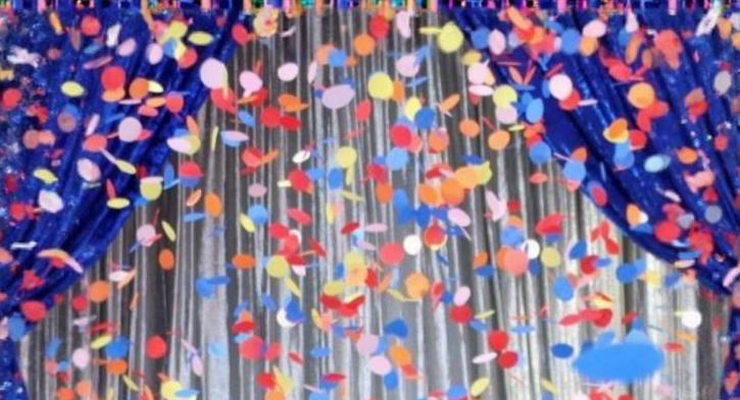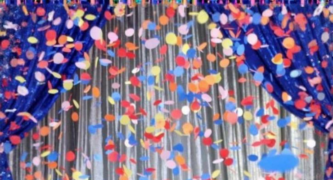
A few hours before the Tournament of Roses names the Grand Marshal for the 137th Rose Parade, it’s worth pausing on the history wrapped up in that one seat at the front of America’s New Year celebration. Over 135 parades, the Grand Marshal has been a local physician and a U.S. president, a rocket scientist and a Muppet, a champion for equality and a champion of the Dodgers’ airwaves. The role is ceremonial, but it has always doubled as a yearbook snapshot of what Pasadena—and, often, the nation—chooses to honor.
Who was first?
The title begins with a doctor. In 1890, the inaugural Grand Marshal was Dr. Francis F. Rowland, chosen in the same year Valley Hunt Club members, led by naturalist Charles F. Holder, launched a winter parade to show off Southern California’s bloom to a snow-bound nation. Rowland went on to serve multiple times and still holds the record with seven turns as Grand Marshal.
How the choice is made
Each year, the Tournament of Roses president selects the Grand Marshal, typically pairing the honoree with the theme he or she has set for that parade. This is less a formula than a tradition, but it explains many of the pairings people remember—and it’s why the selection is watched as an early signal about the parade’s tone.
This year’s theme—”The Magic in Teamwork”—comes from Tournament President Mark Leavens; the 2026 Grand Marshal will be named today. The honor also usually carries a football flourish: the Marshal traditionally participates in the Rose Bowl Game coin toss after the 5½-mile ride down Colorado Boulevard.
Standouts across the decades
Commanders in chief. Former Presidents Herbert Hoover (1945), Dwight D. Eisenhower (1964) and Gerald R. Ford (1978) each led the parade. Richard M. Nixon did it twice—first as a U.S. senator in 1953, then as vice president in 1960—an only-in-Pasadena footnote to a singular political career.
Space age Pasadena. After JPL’s Mariner 2 flew past Venus, Jet Propulsion Laboratory director William H. Pickering was Grand Marshal in 1963, a nod to the city’s scientific backbone. The Apollo 12 crew—Alan Bean, Charles “Pete” Conrad Jr. and Richard F. Gordon Jr.—followed as Marshals in 1970.
From sports legends to storytellers. Baseball’s Hank Aaron (1975) and tennis pioneer Billie Jean King—the first solo female athlete to serve as Grand Marshal—bookend a long list of sports figures. Entertainment icons have been just as present, from Walt Disney (1966) to John Williams (2004), George Lucas (2007), Vin Scully (2014) and Audra McDonald (2024).
Firsts—and the youngest. In 1933, movie star Mary Pickford became the first woman (and the first entertainment figure) to hold the title. Six years later, Shirley Temple became the youngest Grand Marshal; she ultimately served three times (1939, 1989 and, as part of a quartet, 1999), the only person to do so as both child and adult.
Multiple Marshals and unusual picks. Some years multiply the honor. In 1952, seven Medal of Honor recipients shared the role. In 2017, Los Angeles Olympians Greg Louganis, Janet Evans and Allyson Felix rode together. In 2020, the Tournament chose three women—Rita Moreno, Laurie Hernández and Gina Torres. The all-time record for a single parade is four, set in 1999 with Buzz Aldrin, Shirley Temple Black, Jackie Robinson (posthumously) and David L. Wolper to salute the 20th century. And twice the Marshal hasn’t even been human: Kermit the Frog (1996) and Mickey Mouse (2005).
Local threads. Governors of Hawaii and Washington state (William F. Quinn in 1961; Albert D. Rosellini in 1962) took their turns. In 1967, Thailand’s foreign minister Thanat Khoman served—proof the Marshal can be global. Pasadena’s own JPL connection with Pickering and Caltech’s deep ties make science a recurring through line.
Interruptions. Only once in modern times has there been no parade: 2021, canceled at the height of the pandemic. The Grand Marshal returned with actor-author LeVar Burton in 2022 and former congresswoman Gabby Giffords in 2023, a pair of choices that underscored storytelling and resilience.
Jane Goodall’s Pasadena chapter
The Tournament selected Dr. Jane Goodall as Grand Marshal for the 2013 Rose Parade, a choice then-President Sally Bixby said fit the theme, “Oh, the Places You’ll Go!” Goodall’s environmental leadership also dovetailed with parade sustainability efforts. “What an amazing honor, a surprising honor,” she said at the announcement on the Tournament House lawn.
Goodall embraced the coin-toss duty at the Rose Bowl—nervously, by her own admission—after seeking advice from former U.S. Supreme Court Justice Sandra Day O’Connor, a past Grand Marshal. “She said, ‘Oh, I was terrified,'” Goodall recalled with a laugh. (She flipped just fine.)
Her Grand Marshal year also became a platform for outreach. The Tournament highlighted “green” initiatives tied to her selection, and Goodall used media availabilities that week to encourage young people to connect with nature—a recurring theme of her Roots & Shoots youth program.
Goodall died last week at 91, while in California on a speaking tour that included a Pasadena student event. The Jane Goodall Institute said she passed of natural causes; tributes from scientific and environmental circles emphasized the same message she voiced as Grand Marshal—hope, and the cumulative power of small acts. In a final recorded message released by her foundation, she urged young people not to lose heart: “Even today, when the planet is dark, there still is hope.”
Why the Grand Marshal matters
The Marshal doesn’t control a float or a band. But the Tournament’s choice has repeatedly served as a prism for the moment: wartime grit (coach Amos Alonzo Stagg in 1944), the postwar presidency (Hoover in 1945), the Space Race (Pickering in 1963; the Apollo 12 crew in 1970), and modern-day resilience (Giffords in 2023). It’s local, too. Pickering’s selection acknowledged Pasadena’s role in space exploration. Vin Scully’s ride in 2014 saluted a voice that knit generations across Los Angeles. And Audra McDonald’s 2024 turn fit a theme celebrating “a world of music.”
Even the exceptions say something. In 1999, a quartet of Marshals—Temple, Aldrin, Robinson (posthumously) and Wolper—was an unmistakable look back at the century’s cultural, athletic and cinematic touchstones. In 1952, inviting seven Medal of Honor recipients turned the front of the parade into a rolling honor guard. And in 1996 and 2005, Kermit and Mickey signaled the parade’s enduring comfort with whimsy.
What to watch for today
The Tournament has telegraphed the 2026 tone with its theme, “The Magic in Teamwork.” If past is prologue, expect a Marshal whose work embodies collaboration—on a field, a stage, a lab bench or a community campaign. Whoever is named will join a lineage that began with a Pasadena doctor in 1890 and now spans presidents, astronauts, activists, composers and cartoon royalty. After the ride down Colorado, the job ends the way it usually does—at midfield in the Rose Bowl, coin in hand.



















